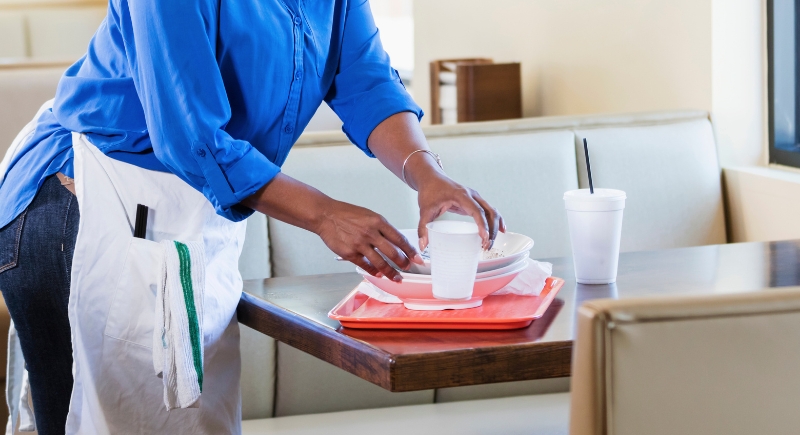Stop Stacking Your Dirty Plates at Restaurants Until You Read This
There is a moment at the end of a meal when the last bite is gone and the plates are sitting there, staring back at you. Some folks feel the urge to tidy up by scraping plates together. It feels helpful, the same as tidying a friend’s kitchen after dinner, but servers say it rarely works out that way.
Why Your Helpful Gesture Backfires

Image via iStockphoto/kali9
Restaurant pros say stacking often makes clearing harder because servers line up utensils and dishes in a clean, organized way that guests rarely match. Instead of saving time, the stack can slow the clearing process and even create shame for staff, who feel like guests think they were not attentive. Additionally, adding more than four plates can make the table look messy, which sets the wrong tone.
Some managers suggest that stacking interrupts the smooth rhythm of a dining room that is supposed to feel effortless. Servers who glide in quietly and remove plates without a word rely on timing and technique. A pile of dishes breaks that flow and draws attention to the mess instead of the company. Stacking is a clear no in that kind of setting.
The Industry Has Thoughts About It
A TikTok skit highlighted how customers sometimes pile plates with cups balanced on top of the food, which turns clearing into a juggling act. Reddit threads reveal that some workers only tolerate stacking if nothing wet, sticky, or sloppy gets trapped. A commenter summed it up by saying that trained servers do not stack their plates at the table, so guests should not either.
Former server Erin Goldsby remembers sticking a thumb into leftover food hidden inside a pile, along with crashes caused by bad stacking. She says pushing a stack to the edge of the table makes carrying harder, not easier. Still, one server said likes stacking when done neatly, though she admits it makes her wonder if she was too slow. She prefers diners to use the classic signal of laying the knife and fork across the plate to show they are finished.
When Stacking Might Be Fine

Image via Canva/Mehaniq
Some exceptions exist. If you are at a bar with limited space, moving a bread plate onto a larger empty plate can free room for someone else. At fast casual places using disposable plates, stacking is expected because you clear your own table. In rare cases where one server is covering a whole room, stacking neatly might save a step.
If you do it, keep big plates on the bottom, smaller ones next, and silverware on top, never on food. Still, most of the time, the best move is to sit back and enjoy the last minutes of the meal. Servers train for clearing as much as they train for serving. Tip well and let them handle the dishes.